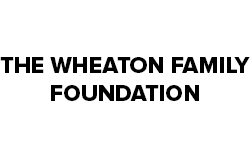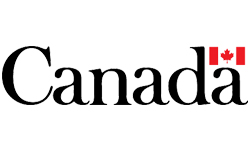Part B: Learning Plan
- Learn that people can live peacefully together and still hold different points of view.
- Learn that points of view are influenced by past experiences which if explored might lead to greater acceptance of an alternate opinion.
- Understand the intent and purpose of human rights documents for children.
CITIZENSHIP INQUIRY
Demonstrate awareness that different points of view may lead to better understandings and acceptance that people can believe different things and still live peacefully together. (PA3.2)
Students will recognize that situations have different points of view and taking the time to explore those viewpoints can lead to greater understanding.
Make generalizations about the purpose and intent of documents that define the rights of children. (PA 3.3)
Students will understand the intent and purpose of human rights documents for children.
QUESTIONS TO GUIDE INQUIRY
- What is another point of view on this situation? /How might someone else view the situation?
- What is influencing that point of view?
- Can two points of view be different and still accurate?
- What is cultural diversity and why is it important?
- How does affirmation (celebration) of diversity strengthen Canada?
- What can I learn from different cultures?
- How does cultural diversity affect opinion?
- Why are treaty relationships important to all Canadians?
- How do treaty obligations impact Canadians?
- What are your treaty obligations/responsibilities?
- What are your community’s treaty responsibilities?
- Why are treaty obligations so difficult to fulfill?
- How would you rate the manner in which treaty obligations have been met?
- How much do rules matter? / Why do we need rules?
- How do rules support society?
- If rules impact people differently are they fair?
- How much power should leaders have? / Who watches/monitors the rule makers?
- What should leaders consider when making rules?
Vocabulary
- point of view
- advocate
- diversity
- opinion
- culture
- environment
- paraphrase
CONNECT TO TOPIC AND SURFACE STUDENTS’ THINKING ABOUT …
- Pose the essential and guiding questions and allow students to discuss their thoughts on the matter.
- Determine what the students know, understand, need to be able to do to master/answer the essential questions (connect to content). Additional guiding questions can be added as required. Students are encouraged to add their questions to the others.
- Create Know, Want to know, Learned Chart – identify vocabulary that requires development
- Surface any additional questions students might have as a result of their discussions about the essential questions.
- Post student answers for reflection at end of study.
- What is an opinion?
- Why do people have different opinions?
- What influences opinions?
- Discuss questions with students to surface their thinking.
Voting with your Feet Activity
This activity has students responding to statements by placing themselves along a continuum or line in the classroom similar to a Lichert scale response. At one end of the line is ‘like or agree’ and at the other end is ‘don’t like or disagree’.
Like/agree ..….…Don’t know/care……….Don’t like/disagree
Give students statements and have them stand at a place on the line that demonstrates their opinion about things.
What do students think about:
- Specific foods, tv shows, movies, activities, school subjects, etc. Choose topics that will engender different points of view but does not have any strong emotional connections.
- Give students time to move to the space on the line that shows how they feel about the item mentioned. Quiz students at different spots on the continuum asking them:
- Why they feel that way?
- What experience they have with the topic?
- How their families might feel about the topic
- Did any students go to the spot because their friends were there?
- Move to issues that evoke more emotion
- Introduce a topic with the words – Which is better? i.e. cats or dogs, one sports team/sport over another? Having cell phones, etc.
- Identify some of the themes that are emerging and post for reflection.
- Explore the emotional connection to different points of view. Note level of emotion in room and surface feelings about student choice.
- Survey the students, collect and track different opinions. Surface feelings about whether others agreed with their opinions of items surveyed above.
- Compare to previous situation. Students should understand that when a different point of view is seen as right or wrong or better or worse, the choice becomes more emotional because it may be seen as a reflection of the person i.e. better or worse, right or wrong.
DEVELOPING UNDERSTANDING
Read or watch the Three Little Pigs Story from the Wolf’s Perspective. Talk about the differences in perspective.
https://www.youtube.com/watch?v=m75aEhm-BYw
- What do students do when confronted with a difference of opinion or point of view?
- What do students do to try to understand another point of view?
- Do students have an identified strategy for listening?
- Do they have some self-talk strategy that they may have learned in health?
- Do students know how to paraphrase?
Post strategies for referral.
- Explore strategies for examining different points of view.
- Reflect on the situations in which different viewpoints exist within the classroom and school. Track and chart the different points of view.
- Ask students to explain their thinking about their particular point of view. Have students note:
- What is their emotional response to the point of view? Like/dislike- agree/disagree- understand/don’t understand – How is this emotion/response impacting my understanding of the point of view?
- What clarifying questions do students have about the point of view that will help their understanding?
- What don’t I understand?
- What additional information do I need?
- Why might the other person feel this way?
- What was the reason for the other person’s opinion? Does this make sense to me? Does it sound logical?
- What personal biases do I have about this?
- What am I taking for granted/assuming?
- Have the student try to paraphrase the person’s point of view. This will help to point out the difficulties in understanding.
- Solicit the opinion of several persons about a current issue of concern in the school. Chart the responses and then work through the questions below to try to understand the point of view.
- Determine your emotional response to decide if that is impacting your understanding of the viewpoint.
- Is student understanding of the point of view clear? Try to paraphrase.
- What additional information is needed?
- Why might this person feel this way?
- Does this person’s thinking make sense to the student?
- What are the consequences of this point of view?
- Identify issues or situations in which groups and communities may experience conflict.
- Research and identify ways in which conflict might be resolved and harmony restored. Students will need to practice thinking from another point of view using skills of empathy and logical reasoning. Have students identify their thinking processes aloud so that they are aware of their thinking and that other students also become aware of different ways to approach situations.
i.e. “Why might people be in favour or against a particular project or issue (e.g., fear that it might cost too much or that it might be too much work, one’s own idea was rejected, desire to contribute to the community, desire to beautify the community)”. - Paraphrase orally and in writing a favourable opinion and an unfavourable opinion about an issue of concern in a community studied.
- Present students with statements that will generate alternate points of view.
i.e. School days should be longer. Fighting should be banned from hockey. - Have students develop clarifying questions that will help to identify the issue and develop alternate points of view on the topic.
APPLY AND EXTEND KNOWLEDGE
Why are treaty relationships important to all Canadians?
- How do treaty obligations impact Canadians?
- What are your treaty obligations/responsibilities?
- What are your community’s treaty responsibilities?
- Why are treaty obligations so difficult to fulfill?
- How would you rate the manner in which treaty obligations have been met?
Learning Plan
Resident Experts – invite immigrants to community to talk with students about some of the reasons why they came to Canada.
CITIZENSHIP INQUIRY STUDY 2
QUESTIONS TO GUIDE INQUIRY
- Why do we need rules?
- How much do rules matter?
- Could we live without rules?
- How do rules support us?
- Where do you have to follow rules?
- Could there ever be a place/situation where rules are not followed? What happens then?
Post student answers for later reflection.
- What are human rights?
- Why are they important?
- Why might we need rules to protect human rights?
Post student answers for later reflection.
Investigate with students the:
- The Canadian Charter of Rights and Freedoms.
- The United Nations Declaration of the Rights of the Child.
For each of the documents identified above have students indicate:
- Who the document is talking about/directed toward?
- What rights or issues are addressed?
- Tell how the document protects the rights of the individual.
- Tell why the document is important and needed.
Divide class into groups and give each group a specific area to learn about and present to the class. Each group must find out the information in the questions posed. Encourage students to present information learned, in a variety of modes including verbal and visual modes so that all students have an entrance point into the presentation and discussion.
- Why are rules to protect the rights of the individual important?
- Why are they needed? / What would happen without rules and regulations for Human Rights?
- Compare the rights and protections for children in Saskatchewan to those in selected international communities.
- Compare how the rights, responsibilities, and roles of citizens in selected international communities are the same or different than those of Canadian citizens. Students should:
- Chart their answers using Venn diagrams to identify similarities and differences.
- Rate the importance of Human Rights Legislations 1 – not important, 5 – important.
- As a class, discuss the differing points of view regarding the importance of such legislation. Why do these differences occur? What is impacting student thinking?
EVIDENCE OF LEARNING
- Choose a classroom or school issue or problem, outline two different points of view and identify the thinking that might represent the different points of view. Identify the patterns of thought used to determine the different points of view.
- Describe how needs are met and the life of a child in the local community to the life of a child in a community studied. Identify the similarities and differences and give reasons for the differences.
STUDENT CITIZENSHIP JOURNAL OPPORTUNITIES
Students are encouraged to respond using a variety of genres.
- How is your life protected because you were born in Canada?
- What is the most important thing for you to consider when trying to understand another point of view?
- Think of a time when someone had a different point of view from yours? How did this make you feel? Could you come to an agreement on your thinking?
- What should leaders consider when making rules?
Learning Plan
- Determine the governing body that developed rules so they can determine fairness, sphere of influence, and advocate effectively to support or change the rules
- Understand that the perceived fairness of rules on diverse groups that live in Canada may be influenced by point of view.
- Determine the sphere of influence of rules that govern behaviour of Canadians
- Advocate effectively to support or change rules to promote social order
CITIZENSHIP INQUIRY 3
IN3.1 – Analyze daily life in a diversity of communities.
Students will be able to identify similarities and differences in communities very different from their own.
IN3.2 – Analyze the cultures and traditions in communities studied.
Students will understand how cultural traditions support communities over time.
QUESTIONS TO GUIDE INQUIRY
- What is cultural diversity and why is it important? / How does affirmation of diversity strengthen Canada?
- What can I learn from different cultures?
- What is another point of view on this situation? / How might someone else view the situation?
- Why are treaty relationships important to all Canadians?
- What treaty area do we live in?
- What are our treaty responsibilities?
- How do we fulfill those responsibilities?
- How much do rules matter? / Why do we need rules?
- How do rules support society?
- How much power should leaders have? / Who monitors the rule makers?
- What should leaders consider when making rules?
CONNECT TO TOPIC AND SURFACE STUDENTS’ THINKING ABOUT …
- Pose the essential and guiding questions and allow students to discuss their thoughts on the matter.
- Determine what the students know, understand, need to be able to do to master/answer the essential questions (connect to content). Additional guiding questions can be added as required. Students are encouraged to add their questions to the others.
- Create Know, Want to know, Learned Chart – identify vocabulary that requires development
- Surface any additional questions students might have as a result of their discussions about the essential questions.
- Post student answers for reflection at end of study.
- Determine what the students know, understand, need to be able to do to master/answer the essential questions
- How do communities work to meet your needs? i.e. housing, tools, work, use of the land, games, education).
- Do communities structure themselves in similar manners? Have students determine yes or no and give reasons for their thinking.
- Why and how do cultural traditions continue?
- Create Know, Want to Know, Learned chart to track learning throughout citizenship study.
- Surface questions that students have.
- Identify vocabulary understandings that must be developed
DEVELOPING UNDERSTANDING
- In groups have students study three communities unfamiliar to them. At least one community should be a First Nations reserve community within their treaty area.
- Students will examine the following areas: meeting daily needs, how culture is reflected and enduring traditions or practices.
- Students will:
- Describe characteristics of daily life in communities studied.
- Compare the ways in which the needs are met by individuals in diverse communities (e.g., housing, tools, work, use of the land, games, education).
- Identify how the culture is reflected throughout community practices and structures (e.g., decision making, holidays, community events, language, stories, cultural traditions, religious traditions, recreation, art, architecture, clothing).
- Identify similarities and differences between their life and the life of a student of comparable age focusing specifically on family, housing, education, and recreation.
- When researching First Nations communities try to have the research be as authentic as possible by arranging classroom visits by elders and community leaders and having students visit First Nations community to meet with elders and community leaders.
APPLY AND EXTEND KNOWLEDGE
“Treaties were foundational agreements entered into for the purposes of providing the parties with the means to achieve survival and stability, anchored on the principle of mutual benefit.”
Source: “Some Common Understandings from the Treaty Table”
http://www.sfsin.com/treatygovernance/treatytable.html
Teaching Treaties in the Classroom: A Treaty Resource Guide for Grade 3 pg. 34
- Have students identify what the quote means from the perspective of The Crown and First Nations’ people. Surface similarities and differences.
- In the study of how communities provide for individuals needs compare how needs are met in First Nations communities on reserve and off-reserve.
- Hypothesize about the interactions students may have with people and communities elsewhere in the world.
- Give examples of traditions and practices that have endured over time in First Nations’ communities and discuss why these are important.
- Make inferences about how the culture of the First Nation’s community is reflected by its customs and celebrations.
- How does the ability of First Nations’ communities to respond to the needs of their community members compare with other communities studied?
- Talk about how/the degree to which Treaty Responsibilities have been honoured from the perspective of First Nations people and non-First Nations people.
- Hypothesize about why the differences might have occurred.
- Students should give evidence and support for their opinion.
EVIDENCE OF LEARNING
- How has student thinking changed?
- Why is it important to learn this information?
- What will students do with this learning?
Give examples of how culture is reflected in daily life and how traditional practices have endured in communities studied, and examine why these cultural elements are important
Respond to one of the journal prompts on the following pages.
Informal Demonstrations of Understanding
- Participate in a celebration of cultures where they celebrate particular aspects of cultures (i.e. Dance, food, music, fashion, games…)
- Note the ability of students to take another person’s perspective in informal problem solving in classroom activities.
STUDENT CITIZENSHIP JOURNAL OPPORTUNITIES
- Why are treaty relationships important to all Canadians? In your opinion how well has Canada honored treaty responsibilities? Why do you think this is so? Give evidence to support your thinking.
- What did you learn about a culture different from yours that you did not know before?
- Why does the world need a Declaration of Human Rights for children?
- What did you learn about human rights for children that surprised you?
- How well does Canada honour and protect human rights for children? Give examples to support your thinking.
© 2024 Concentus Citizenship Education Foundation Inc. All Rights Reserved.










